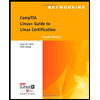
Briefly explain bitwise rotation
Bit operation is also called a circular shift. This is an operation that is similar to shift but the bits that are at one end are put back to the other end.
This operation will move the bits of the binary object.
| OPERATOR | USAGE |
| << | This indicates that the bits are to be shifted to the left. |
| >> | This indicates that the bits are to be shifted to the right. |
Consider opr has a value 16.
The bit pattern in 8-bit format is 00010000
So, we will specify the operation as opr << 2
The left operand (opr) specifies the value to be shifted.
The right operand (2) specifies the number of bits the pattern is needed to be shifted.
Both the operands are of the same precedence and are left-to-right associative.
The operands are of int or enum datatype. The operation is performed and the right operand will be converted to the data type int. So, the result will the same type as the left operand.
NOTE:
The right operand should not have a negative value.
The right operand should not be greater than or equal to the width of the bit that is being shifted.
Step by stepSolved in 4 steps

- Data represented in ________ is transmitted accurately between computer equipment from different manufacturers if each computer’s CPU represents real numbers by using an IEEE standard notation.arrow_forwardA(n) _____ operation transforms a 0 bit value to 1 and a 1 bit value to 0.arrow_forward_____ predicts that transistor density will double every two years or less.arrow_forward
- If 2 bits of a byte are in error when the byte is read from ECC memory, can ECC detect the error? Can it fix the error?arrow_forward___________ occurs when the result of an arithmetic operation exceeds the number of bits available to store it.arrow_forwardIn a CPU, _______ arithmetic generally is easier to implement than _______ arithmetic because of a simpler data coding scheme and data manipulation circuitry.arrow_forward
 Systems ArchitectureComputer ScienceISBN:9781305080195Author:Stephen D. BurdPublisher:Cengage Learning
Systems ArchitectureComputer ScienceISBN:9781305080195Author:Stephen D. BurdPublisher:Cengage Learning CompTIA Linux+ Guide to Linux Certification (Mind...Computer ScienceISBN:9781305107168Author:Jason EckertPublisher:Cengage Learning
CompTIA Linux+ Guide to Linux Certification (Mind...Computer ScienceISBN:9781305107168Author:Jason EckertPublisher:Cengage Learning Enhanced Discovering Computers 2017 (Shelly Cashm...Computer ScienceISBN:9781305657458Author:Misty E. Vermaat, Susan L. Sebok, Steven M. Freund, Mark Frydenberg, Jennifer T. CampbellPublisher:Cengage Learning
Enhanced Discovering Computers 2017 (Shelly Cashm...Computer ScienceISBN:9781305657458Author:Misty E. Vermaat, Susan L. Sebok, Steven M. Freund, Mark Frydenberg, Jennifer T. CampbellPublisher:Cengage Learning Principles of Information Systems (MindTap Course...Computer ScienceISBN:9781285867168Author:Ralph Stair, George ReynoldsPublisher:Cengage Learning
Principles of Information Systems (MindTap Course...Computer ScienceISBN:9781285867168Author:Ralph Stair, George ReynoldsPublisher:Cengage Learning A+ Guide To It Technical SupportComputer ScienceISBN:9780357108291Author:ANDREWS, Jean.Publisher:Cengage,
A+ Guide To It Technical SupportComputer ScienceISBN:9780357108291Author:ANDREWS, Jean.Publisher:Cengage,





